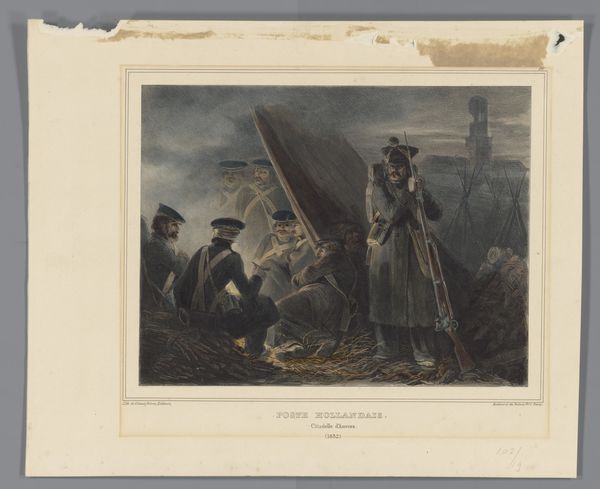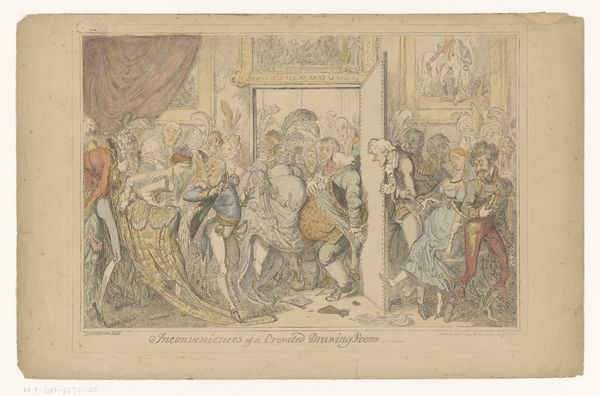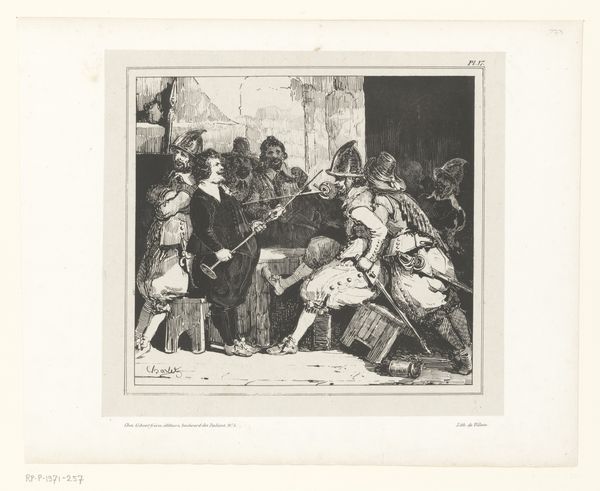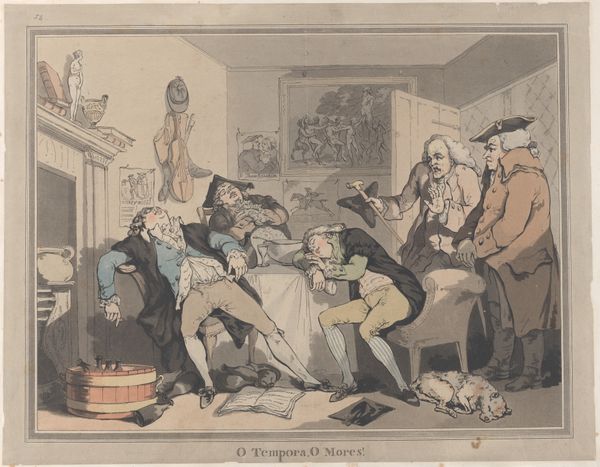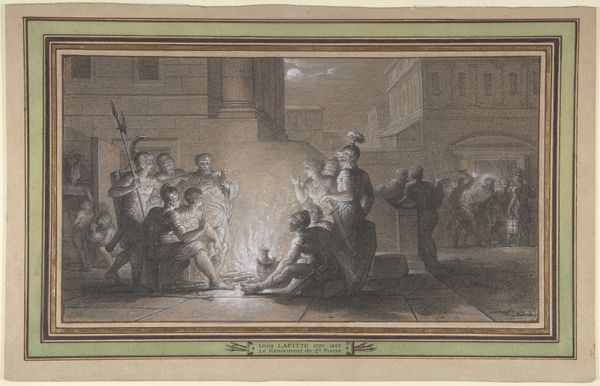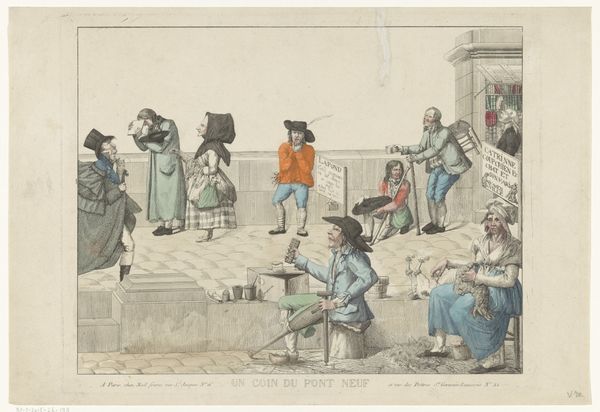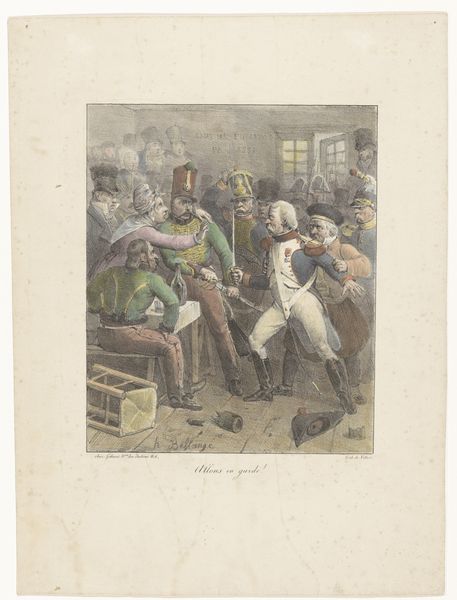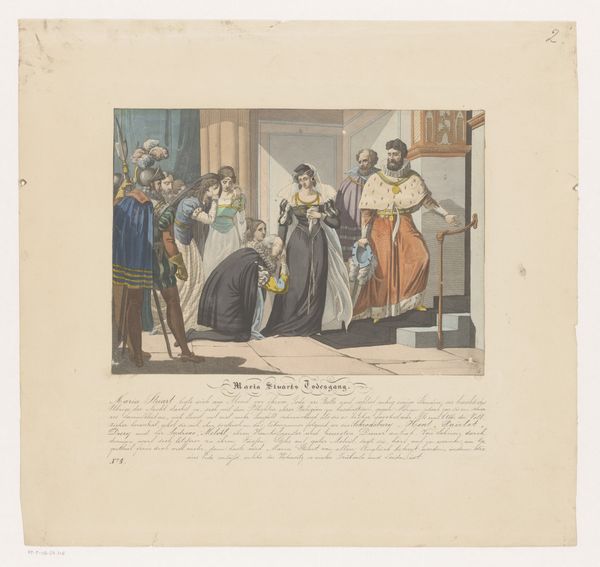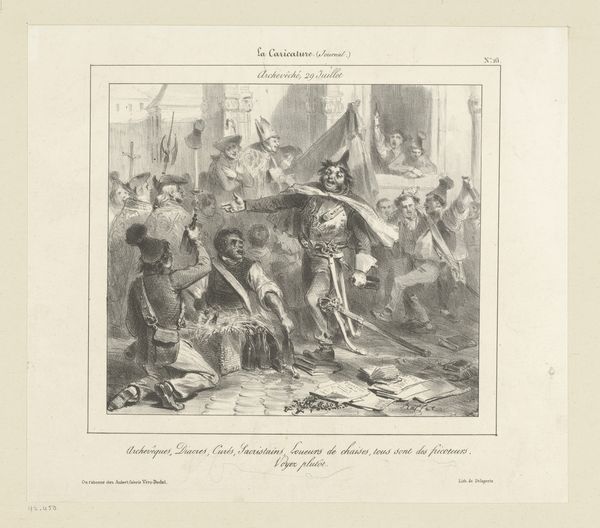
lithograph, print
#
narrative-art
#
lithograph
# print
#
caricature
#
folk-art
#
romanticism
#
genre-painting
#
history-painting
#
watercolor
Dimensions: height 328 mm, width 412 mm
Copyright: Rijks Museum: Open Domain
This print, “Kijkkast op een kermis,” or Peepshow at a Fair, was made by an anonymous artist, using a process of lithography. Lithography is a planographic printing process using a flat stone or metal plate on which the image areas are worked using a greasy substance so that the ink will adhere to them, while the non-image areas are made ink-repellent. You can see this in the final print, where the greasy areas have taken on a dense color, giving depth to the composition. The process would have allowed for the relatively quick production of multiple copies. Consider the social context of the kermis, a kind of fair or market. This was a place where different classes and social groups came together for commerce and leisure. The lithographic print plays a key role by reproducing and circulating images of everyday life within a rapidly changing society, a visual record of social gatherings. Ultimately, the print's significance lies in its depiction of the ways of life and leisure made possible by industrial production. By circulating images like this, lithography contributed to a shared visual culture.
Comments
No comments
Be the first to comment and join the conversation on the ultimate creative platform.

